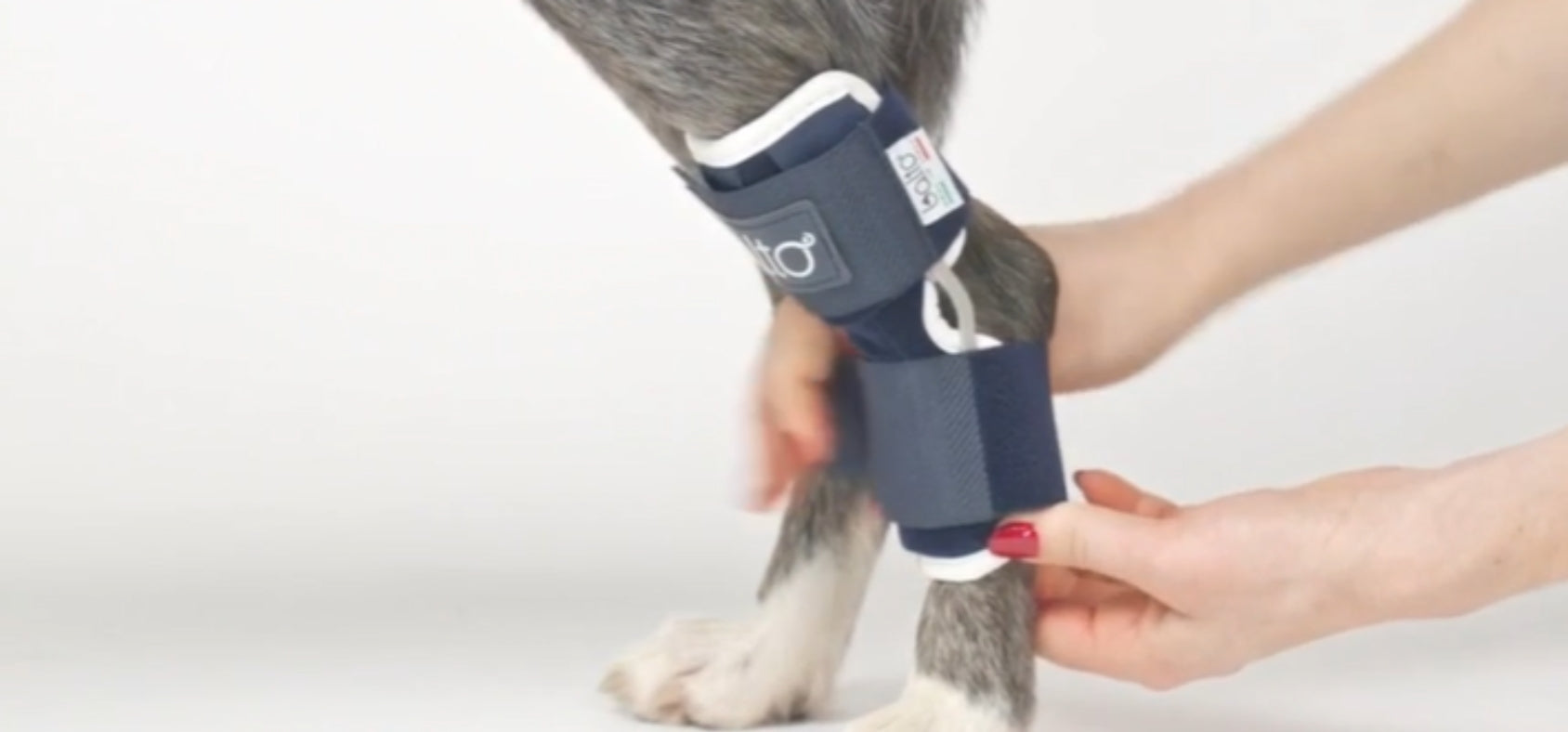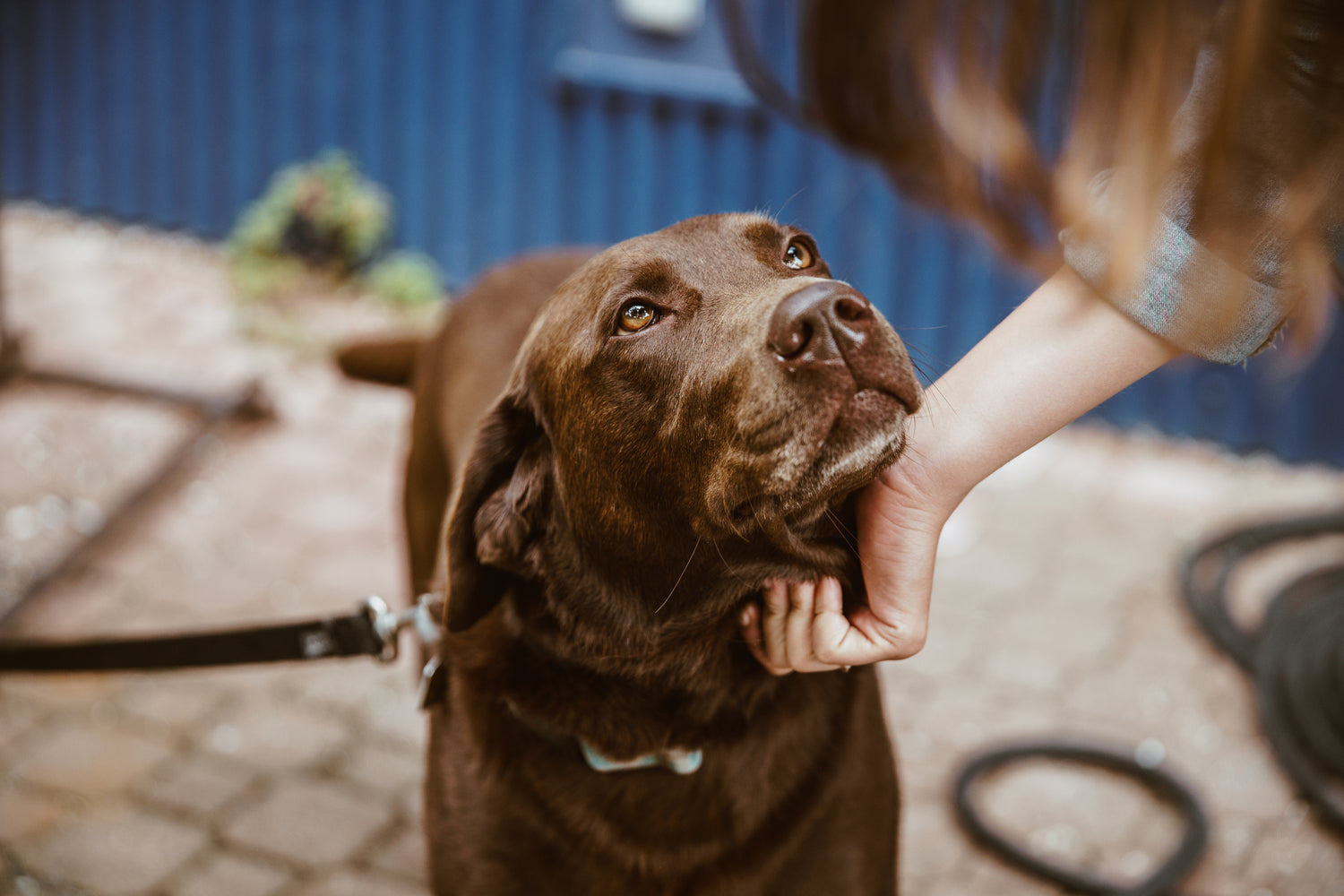At Zoomadog we have many calls from clients who have been told by the Vet that their dog has an Achilles tear or rupture, so here is a little info to help you understand the issue for yourself. If your dog suddenly wrenches or twists his legs, he can strain his Achilles tendon as a result. He may have pain and avoid putting weight on the affected leg. The tendon area soon develops swelling. When he does move, he could look like he's tip-toeing, in response to carrying his hocks low.
Treatment for Achilles Tears or Strains
Take your dog to the vet as soon as possible if you suspect a strained Achilles tendon. They will take an X-ray or ultrasound of the affected leg to make a diagnosis. If your dog has strained their Achilles tendon, your normally active dog requires confinement so he won't further hurt himself. You might have to keep him in a crate when no one's home, just letting him out for toilet breaks. Your vet might advise using cold packs on your dog's tendon several times a day for between 15 and 30 minutes, or run cold water over the leg for the same time periods. After the first couple of days, you may need to start using warm, not hot, compresses on the leg several times daily, for a few days. Your vet might also prescribe anti-inflammatories for pain reduction. One caveat: if your dog doesn't feel pain in his leg, he might try to use it, which you don't want him doing. Complete healing can take three weeks or more. If you want to support you dog while in recovery you can use a
BT Balto Hock Brace or a
WW hock splint to support and stabilise the hock joint. We would also recommend a natural pain and anti inflammatory like the
Winstons Pain formula, as its fast working with no side effects.
What Is Achilles Tendon Rupture?
Your dog's Achilles tendon, known also as the common calcaneal tendon, is situated in his hind limb and composed of multiple muscles. Your dog's injury may be classified as traumatic, such as from a blunt force trauma or laceration, or atraumatic with the cause being degeneration. Your veterinarian will be able to diagnose your dog's injury by utilizing radiograph and ultrasound imaging. Surgery is the ideal treatment plan in order for your dog to be able to use his leg properly again. Recovery is a long process but is possible. An Achilles tendon injury is extremely serious. If your dog has hurt himself suddenly or stops using his leg, take him to his veterinarian for an evaluation. An Achilles tendon rupture is also known as a
rupture of the gastrocnemius tendon, or the
common calcanean tendon. The tendon is actually composed of 5 different tendons, the two most important being the superficial digital flexor and gastrocnemius tendons. The gastrocnemius tendon is the largest of these, and is the most powerful extensor of the hock (ankle) joint. Both the superficial digital flexor and gastrocnemius tendons attach to the heel bone, called the calcaneus bone. A rupture of the Achilles tendon may be a partial tear, which means just the gastrocnemius is torn, or a complete tear, in which all five tendons have been torn.
Who Gets Achilles Tendon Rupture?
Dogs that are affected by an Achilles tendon rupture are primarily from the large sporting and working breeds, and are usually 5 years of age and older. The Doberman pinscher and Labrador retrievers seem to be overrepresented in this condition, but it can occur in any dog or cat, no matter what age or breed.
What are the Signs of Achilles Tendon Rupture
With a
partial rupture, the gastrocnemius tendon is torn, but the superficial digital flexor tendon is still intact. Animals with a partial rupture will have a dropped hock, be lame in the affected leg, and will stand with curled toes. Dogs that have a
complete rupture and all five tendons of the Achilles tendon are torn will have a completely dropped hock, so that he is walking flat-footed rather than on his tippy toes like normal, and will show signs of lameness. Pain and edema (swelling) will follow the injury. Eventually the gastrocnemius muscle will contract, and the area between the bone and the tendon fills with fibrous tissue.
How Is Achilles Tendon Rupture Diagnosed?
Rupture of the Achilles tendon can usually be diagnosed based on clinical signs and physical exam. Radiographs may also be used, and ultrasounds can be useful in distinguishing between partial and complete tears.
Why Did My Dog Get an Achilles Tendon Rupture?
Achilles tendon rupture can be caused by a sudden traumatic event such as a fall, or anything that causes a sudden and extreme flexion of the hock. Rupture may occur over time due to extreme over-stretching and overuse which can cause the tendon to deteriorate and eventually tear. Lacerations are the most likely cause of a complete tear.
How Is Achilles Tendon Rupture Treated?
Because the muscle contracts when the tendon is ruptured, it results in permanent deformity, so medical management using a cast or splint will not work and the injury
must be repaired surgically. The surgical procedure involves removing the damaged portions of the tendon so that the ruptured ends can be reattached together. To reattach the gastrocnemius tendon to the heel bone, bone tunnels are drilled and special non absorbable sutures are passed through the tunnels and into the gastrocnemius tendon. If the SDF tendon is also ruptured, the ruptured portions are stitched back to one another using heavy suture material in a special suture pattern (locking loop) that pulls the torn tendon ends back together. After the tendon(s) have been repaired, the patient
must keep the ankle (hock) in extension for a period of two months, so that the surgery does not fail. After two months the method of stabilization of the hock is removed. Methods to do this include: placement of a screw through the tibia and heal bone with the hock in extension and a cast is usually also applied to the limb; placement of an external skeletal fixator which consists of a series of pins that penetrate the bone and are fixed together with external bars; placement of a circular fixator ring with wires; placement of a cast.
What Is the Prognosis For My Dog with Achilles Tendon Rupture?
Prognosis with surgery is generally very good. The sooner and Achilles tendon rupture is repaired, the better the results will be. If the tear goes without repair for too long, the formation of scar tissue will make the surgery more difficult and possibly less successful. Additionally, if the animal walks plantigrade (like a human with toes and ankle on the ground) for an extended period of time further damage can result which will make surgery more difficult. It is also important to note that
there is significant aftercare in this surgery due to the placement of a cast, possible external fixators or screws, and
strict exercise restrictions and rest. Total recovery takes from 8-10 weeks.
The final outcome of the surgery also depends on the aftercare of the patient.


Leave a comment